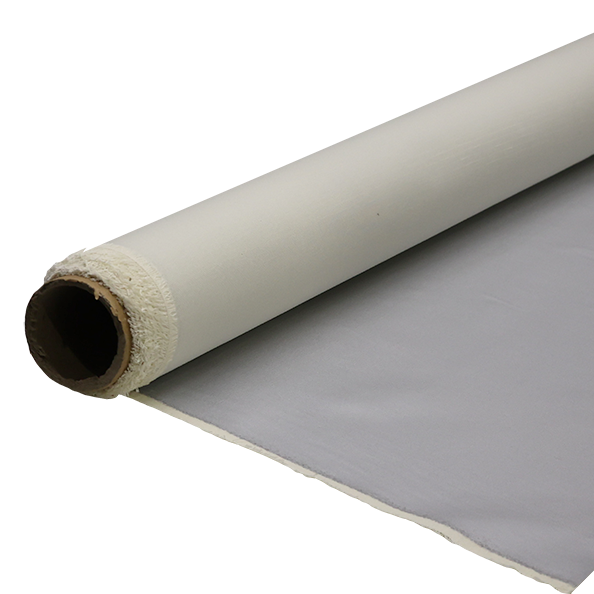Are Composite Materials Sustainable?
-
Table of Contents
“Composite Materials: Balancing Innovation with Sustainability.”
Composite materials, which combine two or more distinct materials to achieve superior properties, have gained significant attention in various industries, including aerospace, automotive, and construction. As the world increasingly prioritizes sustainability, the environmental impact of these materials has come under scrutiny. This introduction explores the sustainability of composite materials, examining their life cycle, recyclability, and potential for reducing resource consumption and emissions compared to traditional materials. By assessing both the benefits and challenges associated with composites, we can better understand their role in a sustainable future.
Environmental Impact of Composite Materials
The environmental impact of composite materials is a multifaceted issue that warrants careful consideration, particularly as industries increasingly turn to these materials for their advantageous properties. Composites, which typically consist of a combination of two or more distinct materials, offer enhanced strength, durability, and lightweight characteristics. However, the sustainability of these materials is often questioned, especially in light of their production processes and end-of-life scenarios.
To begin with, the manufacturing of composite materials can be resource-intensive. The production often involves the use of synthetic resins and fibers, which are derived from petrochemical sources. This reliance on fossil fuels raises concerns about greenhouse gas emissions and the depletion of non-renewable resources. Furthermore, the energy consumption associated with the production of composites can be significantly higher than that of traditional materials such as metals or wood. As a result, the carbon footprint of composite materials during their lifecycle can be substantial, prompting a need for more sustainable manufacturing practices.
In addition to the energy-intensive production processes, the recyclability of composite materials presents another challenge. Unlike metals and glass, which can be easily recycled and repurposed, composites often pose difficulties in recycling due to their heterogeneous nature. The combination of different materials can complicate the separation process, making it challenging to recover valuable components. Consequently, many composite materials end up in landfills, where they can take decades to decompose. This raises critical questions about the long-term environmental impact of composites, particularly as the global demand for sustainable solutions continues to grow.
However, it is essential to recognize that not all composite materials are created equal. Advances in technology have led to the development of bio-based composites, which utilize renewable resources such as natural fibers and bio-resins. These materials not only reduce reliance on fossil fuels but also offer the potential for lower carbon emissions during production. Moreover, bio-based composites can often be designed with end-of-life considerations in mind, allowing for easier recycling or biodegradability. As such, the emergence of these innovative materials represents a promising avenue for enhancing the sustainability of composites.
Furthermore, the application of composite materials in various industries can also contribute to environmental benefits. For instance, in the aerospace and automotive sectors, the lightweight nature of composites can lead to significant fuel savings and reduced emissions over the lifespan of vehicles. By decreasing the overall weight of structures, composites can enhance energy efficiency, thereby mitigating some of the environmental impacts associated with traditional materials. This aspect highlights the importance of evaluating the overall lifecycle of composite materials, considering not only their production but also their performance and potential benefits in reducing environmental footprints.
In conclusion, while the environmental impact of composite materials presents several challenges, it is crucial to approach the topic with a nuanced perspective. The resource-intensive production processes and recycling difficulties cannot be overlooked; however, advancements in bio-based composites and their applications in energy-efficient industries offer a pathway toward greater sustainability. As research and innovation continue to evolve, the potential for composite materials to contribute positively to environmental goals remains a significant area of exploration. Ultimately, the sustainability of composite materials will depend on ongoing efforts to improve their lifecycle management and to develop more eco-friendly alternatives that align with the growing demand for sustainable practices across various sectors.
Lifecycle Analysis of Composite Materials
The lifecycle analysis of composite materials is a critical aspect in evaluating their sustainability. This analysis encompasses the entire lifespan of these materials, from raw material extraction through production, usage, and eventual disposal or recycling. Understanding each phase of this lifecycle is essential for determining the environmental impact of composite materials and their role in sustainable development.
To begin with, the raw material extraction phase is pivotal. Composite materials are typically made from a combination of polymers and reinforcing fibers, such as glass or carbon. The extraction of these raw materials can have significant environmental implications. For instance, the production of synthetic fibers often involves energy-intensive processes and the use of petrochemicals, which contribute to greenhouse gas emissions. Conversely, natural fibers, such as hemp or flax, present a more sustainable alternative, as they are renewable and can be cultivated with lower environmental impact. However, the sustainability of natural fibers also depends on agricultural practices, including land use and pesticide application.
Following raw material extraction, the production phase further influences the sustainability of composite materials. The manufacturing processes for composites can be energy-intensive, often requiring high temperatures and specialized equipment. This energy consumption can lead to a substantial carbon footprint, particularly if fossil fuels are the primary energy source. Nevertheless, advancements in manufacturing technologies, such as the development of more efficient curing processes and the use of renewable energy sources, are helping to mitigate these impacts. Additionally, innovations in material formulations, such as bio-based resins, are emerging as promising alternatives that can reduce reliance on traditional petrochemical sources.
Once produced, composite materials are utilized in various applications, ranging from aerospace to automotive and construction. Their lightweight nature and high strength-to-weight ratio often lead to improved fuel efficiency and reduced emissions during the operational phase of products. For example, in the automotive industry, lighter vehicles consume less fuel, thereby decreasing overall greenhouse gas emissions. However, the benefits of composites must be weighed against their durability and longevity. While composites can offer extended service life, their resistance to degradation can pose challenges for end-of-life management.
The disposal phase of composite materials is particularly complex. Unlike traditional materials such as metals or wood, composites are often not easily recyclable due to their heterogeneous nature. This can lead to significant waste generation, especially in industries where composites are prevalent. Landfilling is a common fate for end-of-life composites, which raises concerns about environmental pollution and resource wastage. However, emerging recycling technologies, such as mechanical recycling and chemical recycling, are being developed to address these challenges. These methods aim to recover valuable fibers and resins from composite waste, thereby promoting a circular economy.
In conclusion, the lifecycle analysis of composite materials reveals a multifaceted picture of their sustainability. While the extraction and production phases present notable environmental challenges, the operational benefits of composites can contribute to reduced emissions in various applications. Nevertheless, the end-of-life management of these materials remains a critical issue that must be addressed to enhance their overall sustainability. As research and technology continue to evolve, there is potential for composite materials to play a more significant role in sustainable practices, provided that their lifecycle impacts are carefully managed and minimized. Ultimately, a comprehensive understanding of the lifecycle of composite materials is essential for making informed decisions about their use in a sustainable future.
Recycling and Reusability of Composite Materials
The sustainability of composite materials has become a focal point in discussions surrounding environmental impact and resource management. As industries increasingly adopt these materials for their superior strength-to-weight ratios and durability, the question of their recyclability and reusability emerges as a critical consideration. Composite materials, which typically consist of a combination of polymers, fibers, and other substances, present unique challenges when it comes to recycling. Unlike traditional materials such as metals and glass, which can be melted down and reformed with relative ease, composites often require more complex processes due to their heterogeneous nature.
One of the primary challenges in recycling composite materials lies in their composition. For instance, fiber-reinforced composites, which are widely used in aerospace, automotive, and construction applications, consist of a matrix material—usually a polymer—reinforced with fibers such as glass or carbon. When these materials reach the end of their life cycle, separating the matrix from the fibers can be a labor-intensive and costly process. Consequently, many composite materials end up in landfills, contributing to environmental degradation and resource depletion.
However, advancements in recycling technologies are beginning to address these challenges. Mechanical recycling, for example, involves grinding composite waste into smaller particles, which can then be used as filler materials in new products. While this method does not restore the original properties of the composite, it offers a way to repurpose waste and reduce the demand for virgin materials. Additionally, chemical recycling methods are being developed that can break down the polymer matrix into its constituent monomers, allowing for the potential recovery of both the fibers and the matrix for reuse. These innovative approaches are crucial in enhancing the sustainability of composite materials.
Moreover, the concept of reusability plays a significant role in the sustainability equation. Many composite products are designed for longevity, which can mitigate the need for frequent replacements. For instance, in the construction industry, composite materials are often used in applications such as bridges and buildings, where their durability can lead to extended service life. By designing products with reusability in mind, manufacturers can reduce waste and promote a circular economy. This approach not only conserves resources but also minimizes the environmental footprint associated with the production of new materials.
In addition to recycling and reusability, the development of bio-based composites presents an exciting avenue for enhancing sustainability. These materials utilize renewable resources, such as natural fibers and bio-based resins, which can significantly reduce the carbon footprint associated with traditional composites. As research in this area progresses, the potential for creating fully biodegradable composite materials becomes increasingly viable, further contributing to a sustainable future.
In conclusion, while the recycling and reusability of composite materials present significant challenges, ongoing advancements in technology and innovative design strategies are paving the way for more sustainable practices. By focusing on recycling methods that can effectively reclaim valuable resources and promoting the reusability of composite products, industries can mitigate the environmental impact of these materials. Furthermore, the exploration of bio-based composites offers a promising path toward reducing reliance on fossil fuels and enhancing the overall sustainability of composite materials. As the demand for sustainable solutions continues to grow, the evolution of composite materials will play a crucial role in shaping a more environmentally responsible future.
Q&A
1. **Question:** Are composite materials recyclable?
**Answer:** Many composite materials are challenging to recycle due to their complex structure, but advancements in recycling technologies are improving the feasibility of recycling certain types of composites.
2. **Question:** Do composite materials have a lower environmental impact than traditional materials?
**Answer:** Composite materials can have a lower environmental impact in specific applications due to their lightweight nature, which can lead to reduced energy consumption and emissions during use, but this varies by material type and lifecycle.
3. **Question:** Can bio-based composites be considered sustainable?
**Answer:** Yes, bio-based composites, made from renewable resources, can be considered more sustainable as they reduce reliance on fossil fuels and can have a lower carbon footprint compared to traditional composites.Composite materials can be considered sustainable when they are designed for longevity, recyclability, and reduced environmental impact during production and disposal. However, the sustainability of composites varies significantly based on their composition, manufacturing processes, and end-of-life management. While some composites offer advantages such as lightweight properties and energy efficiency, challenges remain regarding their recyclability and the environmental footprint of their raw materials. Overall, the sustainability of composite materials is context-dependent and requires careful consideration of their entire lifecycle.











